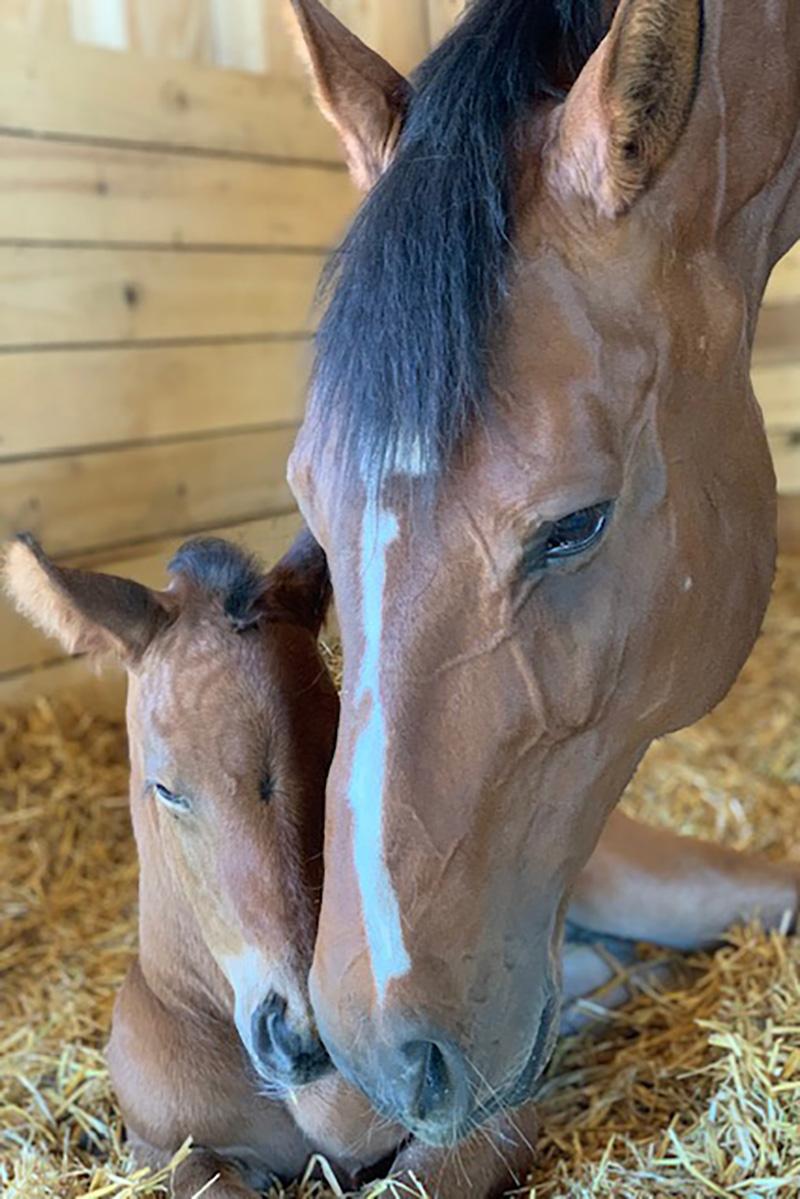Emergency treatment for Thoroughbred mare ensures her pregnancy reaches term
September 8, 2022

Back in late March, a 12-year-old, in foal Thoroughbred mare named Countess Twice (Bee), owned by Eliza Laluna, from Barboursville, Virginia, visited the Equine Medical Center for emergency evaluation and treatment.
Two weeks prior to her visit, after being vaccinated, Bee spiked a fever and a few days later Eliza noticed that she had a nasty mucoid vaginal discharge. Rebecca Kramer, DVM from Keswick Equine Clinic, Gordonsville, Virginia, was called and after a full evaluation, started Bee on medication in the hope of resolving the issue. Unfortunately, the vaginal discharge persisted. Due to suspicious laboratory results and the fear that she was heading to early labor, Kramer referred Bee to the Equine Medical Center for emergency evaluation, treatment and care.
When Bee arrived for treatment, Dr. Krista Estell, clinical assistant professor of equine medicine noted that she was very quiet, showed no signs of pain or discomfort, but was alert and responsive. Mild mucoid vaginal discharge was clearly visible within the vagina and it was noted that she showed minimal udder development.
A brief abdominal ultrasound was performed, and the fetus was visualized moving with a fetal heart rate of 75 bpm - normal fetal heart rate of a foal typically ranges from 60 to 120 bpm. Bee’s uterus and placenta were within normal limits and uterine fluid appeared normal, but Bee’s bloodwork and the vaginal discharge were consistent with infection of the placenta – known as placentitis.
Normal gestation length in the mare ranges from 320 to 362 days - Bee arrived for treatment on day 313 of gestation; a foal born this early would have a very low likelihood of survival. Bee was started on antibiotics, anti-inflammatory and hormone therapy, to treat her inflamed placenta with the goal of maintaining her pregnancy to term.
Bee was admitted to the hospital for monitoring in the hope that parturition could be avoided. During her first night, Bee displayed mild signs of discomfort, but following this brief episode was quiet and comfortable. She continued to have intermittent vaginal discharge, but was eating and drinking and passing normal amounts of urine and manure. Repeat ultrasound performed a couple of days later noted a fetal heart rate of 76 bpm.
Bee was discharged from the hospital on day 320 of gestation for continued monitoring and treatment at home. When she headed home, both of her teats were waxing and there was no active vaginal discharge.
Emily Schaefer, clinical assistant professor of equine medicine, provided precise information for Bee’s continued care at home and suggested weekly follow up examinations and repeat ultrasounds with Dr. Kramer at home until the foal was born.

Bee managed to reach full term and delivered a beautiful, very big bay colt on April 20 - who has since been named Spider! Mare and foal are doing well and both have a clean bill of health.
Eliza said “Thank you to all of the vets and staff who so attentively cared for Bee. Had it not been for you all I don’t think Spider would be here today”.


